Step 1
To add or remove permissions of users in the system, click on the Settings tab at the top of the screen.

Step 2
Click on the Manage Users option on the top right of the dropdown menu.
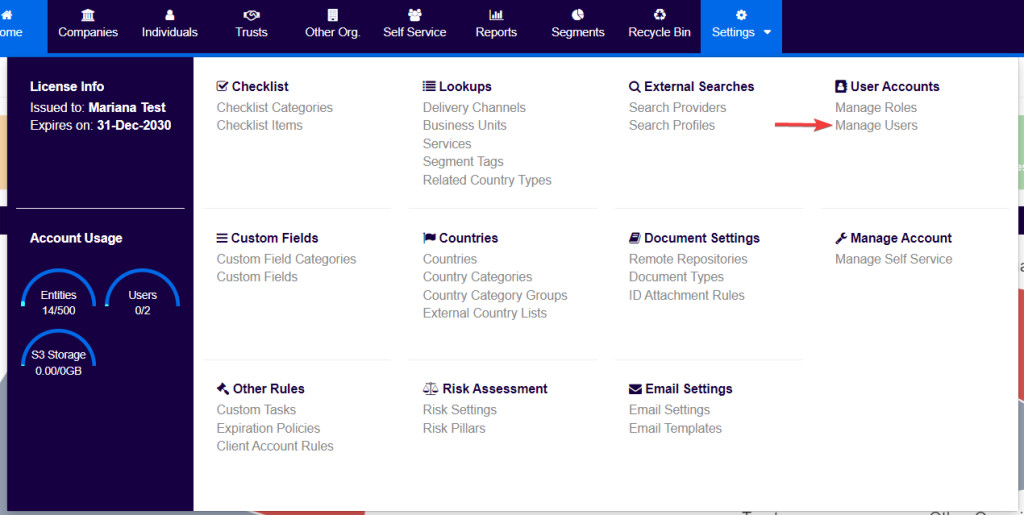
Step 3
Click on the user to modify their permissions.
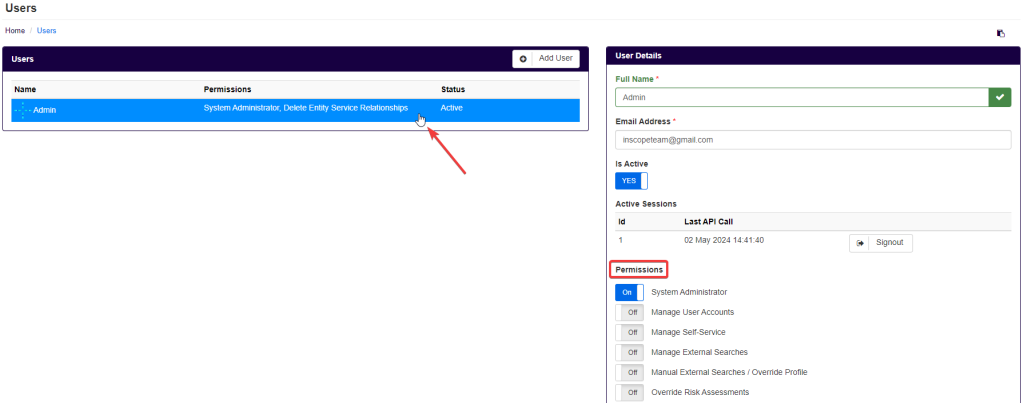
To add or remove permissions, click on the On or Off buttons for each permission.
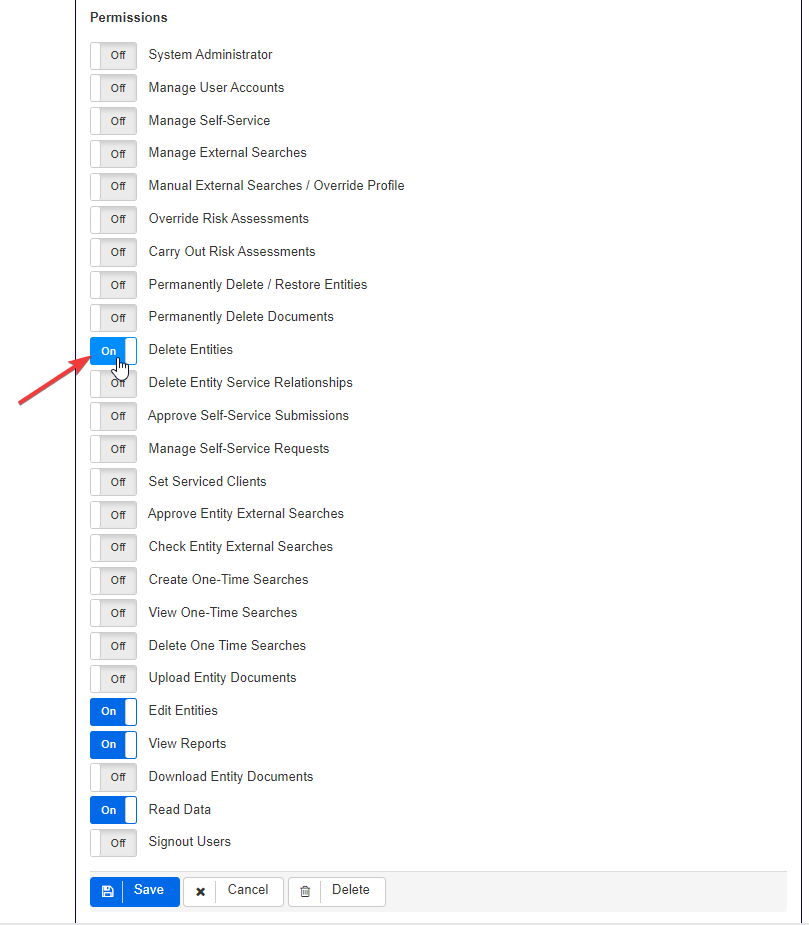
Permissions in this section are arranged from the highest to lowest levels of control within the system.
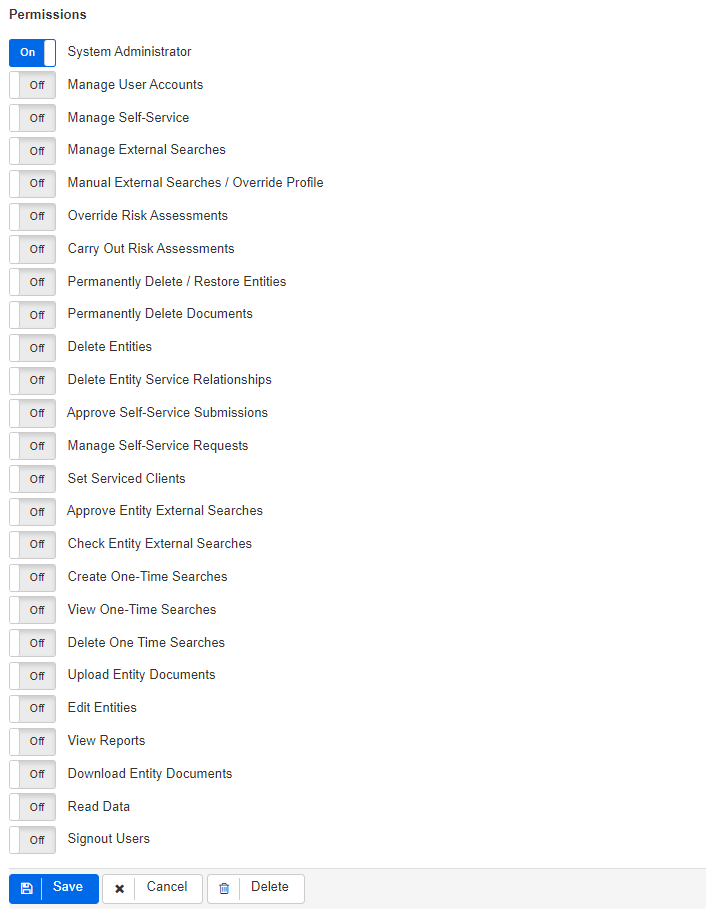
These permissions relate to various activities that the Users will be able to undertake and they are defined as follows:
- System Administrator
This is the highest level of permissions, with the user effectively inheriting all other permissions.
- Manage User Accounts
This permission allows the user to manage all user accounts, including adding new users and assigning or deleting permissions.
- Manage Self-Service
This permission allows the user to edit and to customize self-service settings.
- Manage External Searches
This permission allows the user to resolve open searches and submit their rationale, and also to approve other users’ reviews.
- Manual External Searches / Override Profile
This permission allows the user to perform manual searches and override which search profile is used (see below).
N.B. If StartKYC integration is enabled this can result in using a StartKYC credit and therefore an additional cost – users without this permission cannot undertake manual searches, but automated (overnight) searches are not affected by this permission and will still be performed.

- Override Risk Assessments
This permission allows the user to override the results of a risk assessment that has been recommended by the system. When the system automatically generates a risk assessment, and a user has this permission they can manually select risk scores which will override system recommendations. However, if a manual override is performed the user is required to add a rationale in the comments box at the bottom of the risk assessment.
This can be done at the risk pillar level, or;

At the overall risk classification level.

- Carry Out Risk Assessments
This permission allows the user to perform risk assessments on new and existing entities. This means that the user can save the automatic risk assessment, however, cannot change the risk scores or classification recommended by the system.

- Permanently Delete / Restore Entities
This permission allows the user to delete an entity (i.e. move it to the recycle bin) using the delete button on the top right of the entity profile.

This permission also allows the user to permanently delete the entity from the system or restore it, via the recycle bin’s Perm. Delete and Restore buttons, respectively.

- Permanently Delete/ Documents
This permission allows the user to permanently delete uploaded documents from an entity profile using the Delete button on the entity profile documents page, accessed by clicking the specific document.
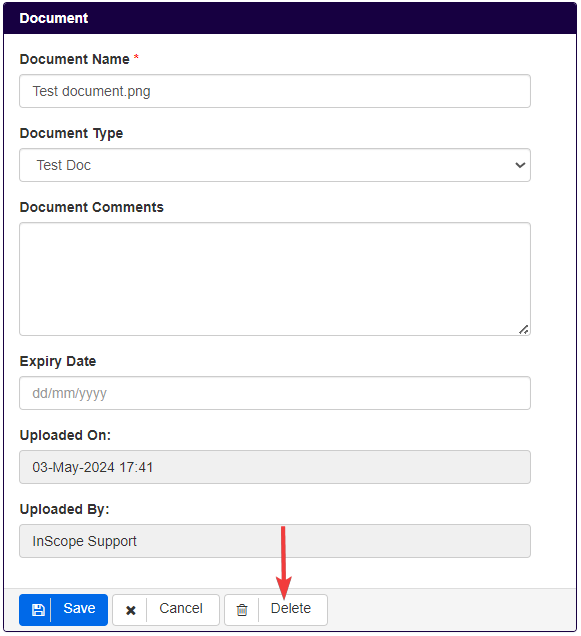
Once a document is deleted via the button shown in the image above, it is sent to the Recycle Bin and can be permanently deleted as shown earlier in this document.
N.B The system does not retain a cache of user documents, as upload, storage and deletion are not managed on the InScope-AML side. Therefore, once permanently deleted, it is not possible to retain a previous version of the document or to recover such a document.
- Delete Entities
This permission allows an user to delete an entity record from the database, using the delete button on the profile, as detailed prior.
This permission does not allow permanent deletion from the Recycle Bin.

- Delete Entity Service Relationships
This permission allows the user to delete services allocated to an entity.

- Approve Self-Service Submissions
This permission allows the user to approve submissions from clients via the Self-Service portal.

- Manage Self-Service Requests
This permission allows the user to Request Updates on the request sent via the Self-Serviced portal.

- Set Serviced Clients
In cases where users are still operating a system with the original service module, there are multiple options for client relationship status.
This permission allows a user to select Serviced Client (Business Relationship) for an Entity profile. Other options can still be selected without this permission.

- Approve Entity External Searches
Depending on your system setup, you may have this permission available for Searches in the system. If your environment is configured to require a four-eye principle for the closing of an external search, then the Approve Entity External Searches permission allows users to approve the closure of the external search after a first review detailed in the ‘Check Entity External Searches’ (immediately below).
If the four-eye principle is not available you will only have one permission level which allows you to close the external search.
- Check Entity External Searches
Depending on your system setup, you may have this permission available for Searches in the system. If your environment is configured to require a four-eye principle for the closing of an external search, then the Check Entity External Searches permission allows users to do the first review of the external search results.
If the four-eye principle is not available you will only have one permission level which allows you to close the external search.
- Create One-Time Searches
Depending on your system setup, you may have this permission available for Searches in the system. This permission allows the user to add a One-Time Search for an Individual or Non-Individual.

- View One-Time Searches
Depending on your system setup, you may have this permission available for Searches in the system. This permission allows the user to view the details of One-Time Searches created in the system.
- Delete One-Time Searches
Depending on your system setup, you may have this permission available for Searches in the system. This permission allows the user to permanently delete One-Time Searches from the system.

- Upload Entity Documents
This permission allows users to upload documents in the system.
- Edit Entities
This permission allows a user to edit Entity profile details.
- View Reports
This permission allows a user to view the reporting tab in the system, along with the information available with the ‘Read data’ permission (immediately below).
- Download Entity Documents
This permission allows users to download and view documents previously uploaded in the system.
- Read Data
This permission allows the user to view the information in the system only.
- Signout Users
This permission allows the user to signout other users in the system.